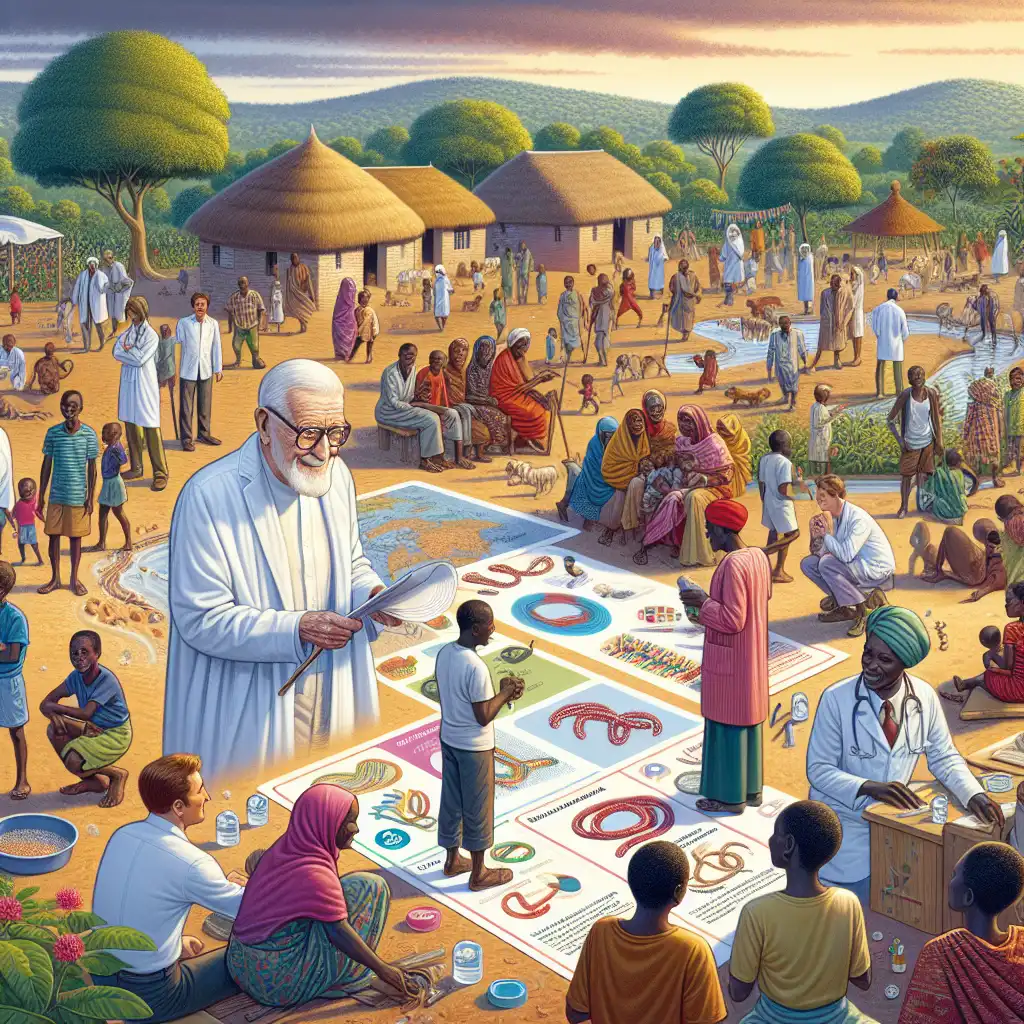Fans of President Jimmy Carter are witnessing the near-fulfillment of one of his lifelong ambitions. At the age of 99 and having spent over a year in hospice care, Carter’s vibrant post-presidential career has seen him champion the global eradication of Guinea worm disease. This debilitating affliction, which causes chronic pain and disability, has seen a significant decline, thanks to decades of dedicated effort.
Carter, who will turn 100 in a couple of months, has been at the forefront of this battle, aiming to eliminate Guinea worm disease, a parasitic infection contracted from contaminated water. The progress made in eradicating this disease is a testament to the extensive public health initiatives and resources allocated to targeted regions.
Table of Contents
ToggleThe Fight Against Guinea Worm Disease
A Global Health Milestone
Over the years, public health programs have made remarkable strides in combating Guinea worm disease. This year, only one human case has been reported worldwide. This is a stark contrast to the 3.5 million cases recorded in 1986. The near eradication of the disease is a result of coordinated efforts between global health experts and local officials, particularly in remote African villages.
- Public Health Programs: Significant resources have been dedicated to eradicating Guinea worm disease.
- Global Coordination: Efforts have been made to synchronize the actions of health experts and local officials.
The World Health Organization (WHO) has announced that Guinea worm disease is “on the verge of eradication,” with 200 countries certified as free from the disease. However, the fight continues, as the disease has the potential to resurface if not completely eradicated.
Carter Center’s Role
Adam Weiss, director of the Carter Center’s Guinea worm eradication program, emphasized that the disease’s potential to transmit back to humans remains a concern. The eradication of Guinea worm disease would mark a significant achievement, as only one other disease—smallpox—has been completely eradicated in humans. Unlike smallpox, Guinea worm disease has no vaccine.
- Eradication Criteria: No cases in humans or animals for three consecutive years.
- Current Challenges: Chad, Angola, Ethiopia, Mali, South Sudan, and Sudan continue to report cases in animals.
The near-total reduction in cases is a testament to President Carter’s vision and commitment to eradicating this neglected tropical disease.
Innovative Strategies and Their Impact
Community-Based Interventions
The Carter Center and its partners have implemented localized health responses, including community education, disease investigation, and the distribution of specially designed drinking straws that filter water. Access to larvicide has also been crucial in reducing the spread of the disease.
- Education: Raising awareness in affected communities.
- Disease Investigation: Tracking the progression of the disease.
- Innovative Tools: Distribution of drinking straws and larvicide.
Guinea worm disease is primarily spread through drinking contaminated water. The symptoms manifest about a year after ingestion, with worms emerging painfully from the skin, causing severe pain and swelling.
Effects on Communities
The disease has historically had devastating effects on village communities, preventing children from attending school and adults from working. This has led to its nickname, the “disease of the empty granary,” due to its impact on food production.
- Economic Impact: Inhibits daily activities and agricultural productivity.
- Health Impact: Causes severe pain, swelling, and secondary infections.
In recent years, data from the Carter Center has shown a dramatic reduction in reported cases, with zero cases reported through March 31 of this year compared to 14 cases in the same period last year.
Addressing Animal Transmission
The Role of Dogs
Recent evidence from Chad has shown that domesticated dogs can carry Guinea worm disease, complicating eradication efforts. The “one health” model, which includes educating communities about the role of dogs in disease transmission, has been crucial in addressing this challenge.
- One Health Model: Focuses on the interconnected health of humans, animals, and the environment.
- Education: Informing communities about the risks posed by infected dogs.
Improved surveillance of both domesticated and wild animals is necessary to achieve complete eradication. The number of infected animals has significantly declined, dropping from 2,000 in 2019 to 162 this year.
Challenges in Proving Eradication
Proving the non-existence of a disease is inherently challenging. Infectious disease epidemiologist Jordan Schermerhorn likened it to proving that a child doesn’t have an imaginary friend. Keeping track of infections, especially in animals, adds another layer of complexity.
- Surveillance: Essential for monitoring disease presence in animals.
- Complexity: Difficulty in proving complete eradication.
Nonetheless, the progress toward ending Guinea worm disease is evident. In the year that President Carter could become a centenarian, only one human case has been reported worldwide.
FAQs about Guinea Worm Disease
What is Guinea worm disease?
Guinea worm disease is a parasitic infection caused by drinking contaminated water containing Guinea worm larvae. The disease leads to severe pain as worms emerge from the skin.
How is Guinea worm disease transmitted?
The disease is transmitted through drinking water contaminated with Guinea worm larvae. The larvae mature in the human body and emerge as adult worms approximately a year later.
What are the symptoms of Guinea worm disease?
Symptoms include fever, swelling, and severe pain as adult worms emerge from the skin, typically from the legs or feet.
Is there a vaccine for Guinea worm disease?
No, there is currently no vaccine for Guinea worm disease.
How close are we to eradicating Guinea worm disease?
The disease is on the verge of eradication, with only one human case reported this year. However, cases in animals still pose a challenge.
What efforts have been made to eradicate the disease?
Efforts include community education, disease investigation, distribution of water-filtering tools, and improved surveillance of animals.
Why is it important to eradicate Guinea worm disease?
Eradicating the disease would prevent the severe pain and disability it causes, improving the quality of life and economic productivity in affected communities.
What role has President Jimmy Carter played in this effort?
President Carter has been a leading advocate for the eradication of Guinea worm disease, dedicating decades to this cause through the Carter Center.
Conclusion
The near-eradication of Guinea worm disease marks a significant milestone in global health, largely due to the unwavering efforts of President Jimmy Carter and the Carter Center. While challenges remain, particularly with animal transmission, the dramatic reduction in human cases is a testament to the power of coordinated public health initiatives. As Carter approaches his 100th birthday, his legacy in public health continues to inspire and drive efforts toward a future free from Guinea worm disease.
















